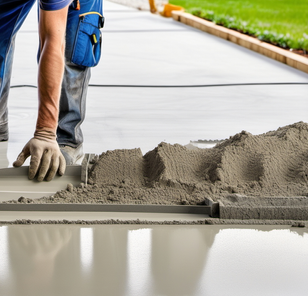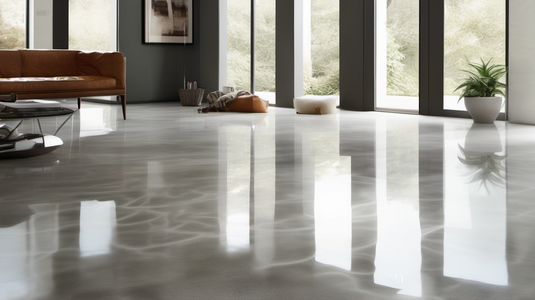5 Common Myths About Concrete Polishing
5 Common Myths About Concrete Polishing

If you’re looking for a beautiful yet affordable flooring solution for your home or business, polished concrete can be an excellent choice!
These floors are durable, long-lasting, low-maintenance, and simply look gorgeous!
However, a few myths are surrounding polished concrete floors that can dissuade some people from giving this unique flooring system a chance. In this article, we’ll dispel these myths and ensure that you have all the facts about polished concrete floors!
Myth #1: Polished Concrete is Slippery
Though polished concrete looks smooth and slippery, it actually provides the same grip and friction level as bare concrete. Polished concrete can even be less slick than tile or marble floors, especially in wet circumstances. This is because the polished concrete’s non-porous surface prevents it from becoming overly slippery when it gets wet. Care should still be taken when walking on a wet floor, regardless. However, polished concrete can be somewhat difficult to walk on when fine powders or dust covers the floor, such as sawdust, dirt, or other powders.
Myth #2: Polished Concrete is Cold in the Winter and Hot in the Summer
The temperature of your polished concrete floor can fluctuate in areas that aren’t climate controlled, such as in garages and basements. So, if you polish the concrete in your unheated garage, then, of course, the floor’s temperature will vary depending on the outdoor temperature. However, this isn’t the case with every polished concrete floor. If your floor is in a climate-controlled environment, such as an office, retail store, or in your home’s living space, the time of year will have nothing to do with your floor’s temperature. The temperature in your climate-controlled room will be the largest determiner of how warm or cool the floor feels.
Myth #3: Polished Concrete is Hard to Maintain
This myth couldn’t be further from the truth. Polished concrete floors are much easier to maintain than bare concrete and many other traditional flooring systems. Bare concrete sheds fine dust constantly, and when you polish the concrete, it eliminates this dusting, which significantly reduces the work that goes into maintaining the floor. The polished surface also creates a smoother finish that makes sweeping easier too. It’s recommended that you sweep or dust mop daily, wet mop with a pH-neutral cleaner weekly, and spot mop as spills occur to keep your polished concrete clean. That’s all you need to do to keep your polished concrete looking beautiful and lasting as long as possible.
Myth #4: Polishing Concrete Makes it More Susceptible to Cracking
The first thing to keep in mind regarding this myth is that all concrete flooring will crack, no matter if it’s polished, bare, or coated. Concrete typically cracks during the curing process and will continue to crack from time to time over the years. Polishing will not change this inherent aspect of concrete in any way, for better or worse. However, polishing concrete can help draw attention away from unsightly cracks.
Myth #5: Concrete Stains will Wear Off from Polished Concrete
Concrete stains can be applied during the polishing process to give your polished concrete a unique look. There are two types of concrete stains, acid-based and water-based stains. Acid concrete stains react with the concrete chemically to provide permanent color. Water-base stains permeate the concrete’s surface to impart permanent color. Stains are not like paints, which can flake and rub away. With stains, the color extends deeply into the concrete and doesn’t wear away.
Wrapping Things Up
Just remember, polished concrete isn’t overly slippery, cold or hot because of the time of year, hard to maintain, more susceptible to cracking, and stains don’t wear off of polished concrete. With these common myths corrected, you should have all the facts about concrete polishing to help you make an educated decision about whether this versatile flooring system is for you or not.





